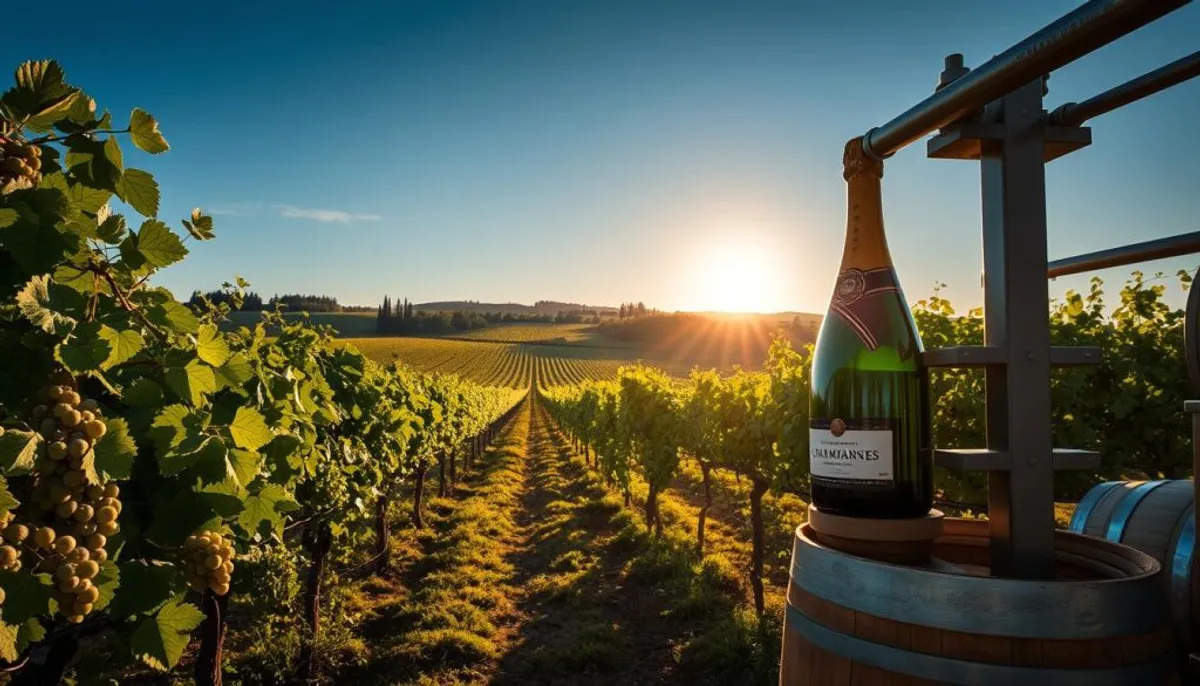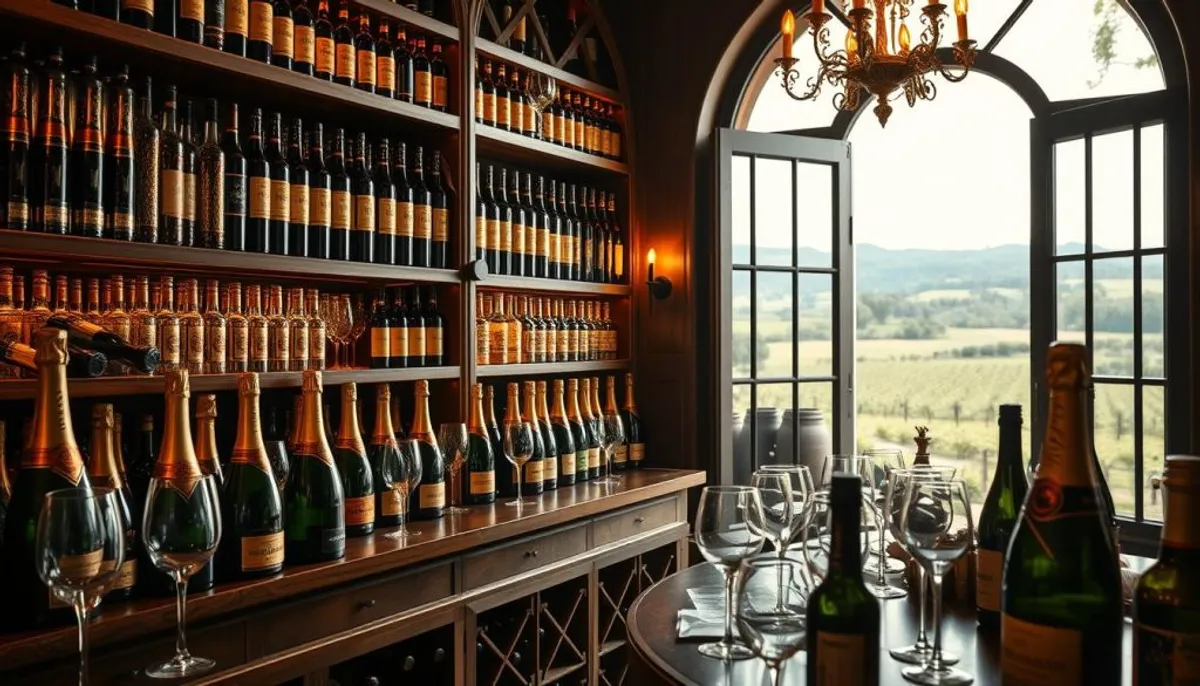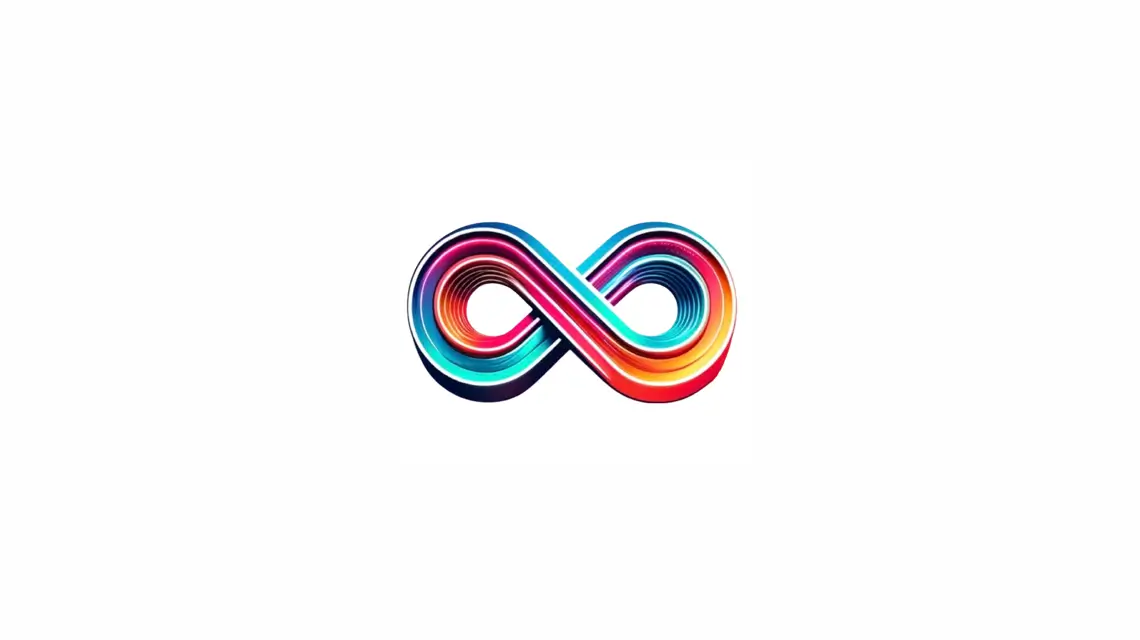Prepare to indulge in the effervescent realm of luxury champagne for 2025. We explore the pinnacle of premium bubbly and French sparkling wine. Discover the elite champagne brands that promise to elevate your palate.
The champagne industry is abuzz with anticipation. Recent tastings have unveiled vintages from the esteemed years of 2019 and 2012. Vilmart Blanc de Blancs Les Blanches Voies emerges as a standout at €250. In contrast, Penet-Chardonnet Terroir & Sens presents an affordable yet exquisite option at €65.

A Margaine L’Extra-Brut NV is a remarkable find at €40. For those seeking the ultimate, Roederer Cristal Brut boasts a 99-point score, with its Rosé sibling achieving perfection at 100 points. This exemplifies the pinnacle of French sparkling wine excellence.
Are you ready to embark on a journey through 2025’s most anticipated champagne offerings?
Key Takeaways
- Top champagnes for 2025 come from exceptional 2019 and 2012 vintages
- Vilmart Blanc de Blancs Les Blanches Voies leads the luxury pack at €250
- Penet-Chardonnet Terroir & Sens offers great value at €65
- A Margaine L’Extra-Brut NV is a budget-friendly option at €40
- Roederer Cristal Brut and Rosé scored 99 and 100 points respectively
- 2025’s champagne selection caters to various tastes and budgets
Understanding Champagne: A Legacy of Excellence
Champagne’s storied past stretches back centuries, originating in the enchanting Champagne region of France. This effervescent wine has become a symbol of celebration and opulence globally. The production of Champagne involves precise processes and stringent regulations, shaped by centuries of evolution.
The Historical Significance of Champagne Region
The winemaking heritage of the Champagne region began in the 17th century, when monks serendipitously discovered secondary fermentation. This chance discovery introduced bubbles into wine, revolutionizing Champagne’s history. By the 19th century, Champagne had transcended its local roots, adorning the tables of royalty and the elite.
AOC Certification and Production Methods
In 1935, the Champagne region was granted AOC certification, setting forth rigorous guidelines for its production. These rules ensure that only wines produced within the region can be labeled as Champagne. The AOC certification dictates specific production techniques and grape varieties, safeguarding the wine’s integrity and excellence.
The Importance of Terroir in Champagne Making
Terroir is pivotal in Champagne’s creation, contributing to its distinctive essence. The region’s chalky soil and cool climate are perfect for cultivating Chardonnay, Pinot Noir, and Pinot Meunier grapes. Each area within Champagne, like Montagne de Reims, imparts unique flavors to the wines, showcasing the region’s varied terroir.
The traditional méthode champenoise involves two fermentations, crafting Champagne’s iconic bubbles. This method, combined with the region’s terroir and strict production standards, yields the exquisite sparkling wines that have enthralled wine aficionados for generations.
What Makes a Best Champagne: Essential Criteria
Champagne quality is a symphony of elements. The bubble structure is paramount, with fine, persistent bubbles signaling exceptional craftsmanship. A premier Champagne offers a rich flavor profile, combining crisp acidity with delicate fruity undertones and a hint of minerality, making it the perfect choice for celebrations, especially when enjoying champagne nga.
Experts emphasize the significance of pristine fruitiness and a fine mousse. The finest Champagnes present a perfect harmony of freshness and depth, with each sip revealing layers of complexity. Seek out wines that are dry, accessible, and feature vibrant citrus notes, such as veuve clicquot lcbo.
Price is often a reflection of quality in Champagne. The stringent production standards and aging requirements elevate the cost, with quality Champagnes beginning at around $45. Yet, price is not the sole determinant of excellence. Consider the reputation of the producer and expert opinions, such as lcbo champagne reviews, when choosing your champagne.
| Criteria | Description |
|---|---|
| Bubble Structure | Fine, persistent bubbles |
| Flavor Profile | Complex, balanced, with bright citrus and minerality |
| Aroma | Fresh, with notes of fruits and sometimes brioche |
| Texture | Creamy, with a fine mousse |
| Finish | Long-lasting and elegant |
The ultimate best Champagne is the one that resonates with your personal taste. Venture into various styles and producers to discover your ideal match.
The Art of Champagne Production Methods
Champagne production is a meticulous process that combines tradition and precision. The méthode champenoise, the hallmark of authentic Champagne, involves a series of steps that transform still wine into the beloved sparkling beverage.
Traditional Méthode Champenoise
The méthode champenoise begins with carefully selected grapes, typically Chardonnay, Pinot Noir, and Pinot Meunier. These grapes are hand-harvested between August and October to ensure optimal quality. After pressing, the juice undergoes primary fermentation, creating a base wine.

Aging Requirements and Their Impact
Aging is crucial in Champagne production. While the minimum requirement is 15 months on lees, many producers age their Champagnes much longer. This extended aging process contributes to the complexity and depth of flavors, with some of the finest Champagnes aging for five years or more.
The Role of Secondary Fermentation
Secondary fermentation is the key to Champagne’s effervescence. The base wine is bottled with a mixture of sugar and yeast, triggering this process. As the yeast consumes the sugar, it produces carbon dioxide, creating the signature bubbles. This fermentation in the bottle is what distinguishes Champagne from other sparkling wines.
After fermentation, the bottles undergo riddling, a process invented by Madame Veuve Cliquot. Traditional riddling involves manually turning bottles to collect yeast sediment in the neck. Modern producers often use gyropalettes, which can riddle up to 500 bottles simultaneously, streamlining this labor-intensive step.
The final touches involve disgorgement and dosage. Disgorgement expels the collected yeast, while dosage adds a secret mixture to adjust sweetness and top up the bottle, completing the Champagne production process.
Premier Champagne Houses and Their Signatures
The realm of luxury Champagne brands is steeped in history and excellence. Roederer Cristal, Pol Roger, and Taittinger stand out for their unparalleled offerings. Each house brings its distinct flair to the art of Champagne creation.
Roederer Cristal: A Legacy of Luxury
Roederer Cristal represents the zenith of luxury Champagne. It is renowned for its laser-like focus and finesse, consistently garnering top ratings. The 2004 vintage, for instance, scored an impressive 99 points, highlighting its enduring quality.
Pol Roger’s Distinguished Portfolio
Pol Roger is celebrated for its excellence. Their Cuvée Sir Winston Churchill is a highlight, with 21 vintages showcasing the house’s dedication to quality. This Champagne exemplifies Pol Roger’s mastery in crafting complex, age-worthy wines.
Taittinger’s Modern Excellence
Taittinger seamlessly blends tradition with modern techniques. Their 2014 Brut Millésime, with 94 points, is commended for its toasty complexity and intense palate. Taittinger’s cellars house about 3 million bottles, with 18 million more stored in central France.
| Champagne House | Founded | Signature Champagne | Visit Price (per person) |
|---|---|---|---|
| Roederer | 1776 | Cristal | €70-€120 |
| Pol Roger | 1849 | Cuvée Sir Winston Churchill | €35-€75 |
| Taittinger | 1734 | Comtes de Champagne | €27-€80 |
These premier Champagne houses offer unique experiences for visitors. Tours provide insights into their rich histories and production methods, with prices ranging from €27 to €120 per person. The cellars, maintained at 8-12°C (46-54°F), create the perfect environment for aging these exquisite wines.
Vintage vs Non-Vintage: Understanding the Differences
Champagne aficionados frequently face a dilemma between vintage and non-vintage selections. Each category embodies the quintessence of this esteemed sparkling wine, yet they diverge in their production techniques, aging stipulations, and taste profiles.
Non-vintage Champagne, which constitutes over 90% of the market, is a blend of grapes from various vintages. This blend ensures a consistent taste. These Champagnes must age for at least 15 months on the lees, with a minimum of 12 months. They are best savored within three years of their release.
Vintage Champagne, on the other hand, is crafted from grapes of a single harvest year. It represents the zenith of a house’s craftsmanship. These rare wines require a minimum of three years of aging on the lees, which enhances their complexity. The extended aging potential of vintage Champagnes makes them highly coveted by collectors and connoisseurs.
| Characteristic | Non-Vintage Champagne | Vintage Champagne |
|---|---|---|
| Production Frequency | Every year | Only in exceptional years |
| Minimum Aging | 15 months | 36 months |
| Aging Potential | 2-3 years | 10+ years |
| Price Range | Lower | Higher |
| Example | Ruinart Blancs de Blancs N.V. | 2008 Taittinger Comtes de Champagne |
Whether you lean towards the uniformity of non-vintage Champagne or the distinctiveness of vintage varieties, both offer a premium drinking experience. The decision hinges on individual preferences, the occasion, and financial considerations. For those seeking a unique twist, the iqos champagne offers an innovative alternative that complements traditional choices.
Best Champagne Selections for 2025
Champagne aficionados, prepare to savor the finest effervescent delights of 2025. Our meticulously curated list encompasses a spectrum of top-tier Champagne brands, catering to diverse tastes and budgets. Whether you’re in pursuit of opulence or seeking a more accessible option, our selections guarantee a memorable experience.
Luxury Premium Selections
For connoisseurs desiring the zenith of luxury, Bollinger 2013 La Côte aux Enfants emerges as a standout. With a production of just 1,000 bottles, and only 70 reaching U.S. markets, it’s a rare gem for collectors. Another gem is the Rare Millésime 2012, a harmonious blend of 70% Chardonnay and 30% Pinot Noir, epitomizing elegance.
Mid-Range Excellence
In the realm of mid-range offerings, Delamotte 2014 Blancs de Blancs stands out at $120, offering superior quality without financial strain. The M&S Collection St Gall Champagne Brut, scoring 78/100, impresses with its rich, buttery notes and balanced Chardonnay and Pinot Noir composition.
Value Champagne Picks
For those seeking the best value in sparkling wine, Aldi’s Veuve Monsigny Champagne Premier Cru Brut is a panel favorite, scoring an impressive 85/100. It’s a budget-friendly option that doesn’t compromise on quality. Lidl’s Comte de Senneval Champagne Brut, with a score of 82/100, offers remarkable value at just £13.99.
| Champagne | Score | Price Range |
|---|---|---|
| Aldi Veuve Monsigny Premier Cru Brut | 85/100 | Affordable |
| Lidl Comte de Senneval Brut | 82/100 | Affordable |
| M&S Collection St Gall Brut | 78/100 | Mid-Range |
| Delamotte Blancs de Blancs 2014 | N/A | Mid-Range |
| Bollinger 2013 La Côte aux Enfants | N/A | Luxury |
The Rise of Boutique Champagne Producers
The Champagne industry is undergoing a transformation. Despite the dominance of giants like Moët and Veuve Clicquot in the US, boutique producers are making strides. They offer a distinct experience that appeals to younger consumers, who value authenticity above all else.
Small-batch Champagne houses, though holding only 5% of sales, are making significant impacts. Their focus on terroir and limited production from specific plots sets them apart. This commitment to craftsmanship is gaining them acclaim in the wine community.
Chartogne-Taillet exemplifies this trend. Their Chemin de Reims Blanc de Blancs Extra Brut 2019 garnered 93 points from critics. They lauded its refined palate and detailed nose, highlighting the potential of these smaller producers.
| Aspect | Large Houses | Boutique Producers |
|---|---|---|
| Market Share | 90% of exports | 5% of total sales |
| Production Focus | High volume | Limited quantities |
| Approach | Consistent style | Terroir-focused |
| Consumer Appeal | Brand recognition | Authenticity, uniqueness |
The Champagne region is home to 16,000 growers and 280,000 plots. This vast array of vineyards offers a fertile ground for artisanal producers to create unique wines. As consumers increasingly seek diverse flavor profiles, these small-batch Champagnes are well-positioned to expand their market share.
Expert Storage and Serving Guidelines
Proper Champagne storage and presentation are essential for enjoying this luxurious sparkling wine. We will explore the best practices to ensure your Champagne retains its quality and flavor.
Optimal Temperature Control
Champagne storage temperature is critical for preserving its characteristics. The ideal storage range is between 45°F and 55°F (7°C to 13°C). Temperatures above 70°F can degrade the wine, while those below 45°F may damage the cork. For serving, chill Champagne to 47°F to 50°F (8°C to 10°C) to maintain its effervescence and aroma balance.
Proper Storage Techniques
Store Champagne bottles in a cool, dark place away from direct sunlight to prevent UV damage. Maintain humidity levels between 70-85% to keep corks moist. While traditionally stored horizontally, experts now say vertical storage is acceptable as the carbon dioxide protects the cork. For long-term aging, consider magnum bottles, which allow for slower oxidation.
Service and Presentation Tips
When it’s time to serve, presentation is key. Use tulip-shaped white wine glasses to concentrate aromas. Hold the glass by the stem to prevent warming. Pour gently at a 45-degree angle, filling about two-thirds full to preserve bubbles and allow the bouquet to develop. Remember, Champagne versatility extends to food pairings – try Blanc de Blancs with white fish or rosé Champagne with game fowl.
| Aspect | Recommendation |
|---|---|
| Storage Temperature | 45°F – 55°F (7°C – 13°C) |
| Serving Temperature | 47°F – 50°F (8°C – 10°C) |
| Humidity | 70% – 85% |
| Glassware | Tulip-shaped or flute |
| Pouring Angle | 45 degrees |
Champagne Investment and Collecting

Champagne investing has evolved into a lucrative field for both wine aficionados and astute investors. The rare Champagne vintages market is experiencing a significant boom, with exports hitting 320 million bottles in 2021, a 30% leap from 2020. This escalation has propelled annual revenues beyond $6 billion, positioning Champagne as an attractive investment option.
Wine collecting, with a focus on Champagne, presents unique opportunities. The Champagne market is forecasted to expand at a 6.2% compound annual growth rate from 2020 to 2025. This expansion is fueled by rising demand in established markets like the US and UK, as well as burgeoning markets such as China, which witnessed a 30% increase in imports from 2013 to 2018.
Investing in rare Champagne vintages can yield substantial returns. For instance, the 1993 Dom Perignon Oenotheque Rose experienced a 98% price hike, escalating from $806 to $1,601. The 2008 Krug Vintage Brut saw an even more remarkable 183% appreciation, jumping from $236 to $669. These figures highlight the potential for substantial gains in Champagne investing.
| Champagne | Initial Price | Current Price | Appreciation |
|---|---|---|---|
| 1993 Dom Perignon Oenotheque Rose | $806 | $1,601 | 98% |
| 2008 Krug Vintage Brut | $236 | $669 | 183% |
For those engaged in wine collecting, rare Champagne vintages present a compelling proposition. Their limited production, aging potential of 15 to 20 years, and the prestige of brands like Dom Pérignon, Krug, and Louis Roederer’s Cristal make them highly coveted. It is essential to remember that proper storage is critical to preserve the value and quality of your Champagne investment.
Alternative Sparkling Wines Worth Considering
While Champagne holds its throne, the realm of global sparkling wine presents enticing alternatives. Crémant and Cava, among others, offer unparalleled value and flavor. These options are worth exploring for those seeking a more affordable yet satisfying experience.
Crémant Varieties
Crémant, a sparkling treasure from France, originates from regions such as Bordeaux, Bourgogne, and Loire. Utilizing traditional methods, Crémant de Bourgogne presents a luxurious taste at a mere $19-20 per bottle. This is significantly less than the cost of Champagne, making it an attractive choice for those desiring quality without the hefty price tag.
Global Sparkling Alternatives
Spain’s Cava, predominantly from Catalonia, is a blend of native grapes like Macabeo, Parellada, and Xarel·lo. A Cava reserva, aged for 15 months, is priced around $16-17. This places it on par with basic non-vintage Champagne in terms of quality but at a more affordable rate.
In Italy, Franciacorta from Lombardy adheres to strict DOCG regulations. Its traditional method produces wines with creamy textures and refined flavors. Prosecco, another Italian favorite, employs the Charmat method for its light, fruity characteristics. High-quality Prosecco originates from the Valdobbiadene and Conegliano regions.
Emerging Regions and Producers
South Africa’s Cap Classique sparklers, made from chenin blanc and chardonnay, rival Champagne in quality. Graham Beck’s offerings, priced at $14-16, highlight the region’s potential. English sparkling wines, crafted from traditional Champagne grapes, are also gaining recognition for their complexity and quality.
| Sparkling Wine | Origin | Price Range |
|---|---|---|
| Crémant de Bourgogne | France | $19-20 |
| Cava Reserva | Spain | $16-17 |
| Graham Beck Cap Classique | South Africa | $14-16 |
Conclusion
As we anticipate the best Champagne 2025 selections, the luxury sparkling wine scene remains captivating. Prestigious houses like Moët & Chandon and Veuve Clicquot stand alongside emerging stars such as Henriot and Taittinger. Each offers a unique experience, catering to diverse tastes and budgets.
The Champagne region, a UNESCO World Heritage Site since 2015, is steeped in history, dating back to the 1st century. It now leads in sustainable winemaking, merging tradition with modern innovation. Whether you favor a crisp Blanc de Blancs or a complex vintage, the ideal choice is out there.
For those interested in alternatives, Crémant varieties and global sparkling wines are worth exploring. They provide excellent value and distinct flavors. The essence of enjoying any bubbly lies in proper storage and serving. Aim for temperatures between 8-12°C to enhance aromas and flavors. Here’s to toasting with the finest effervescence in 2025 and beyond!
RelatedRelated articles



